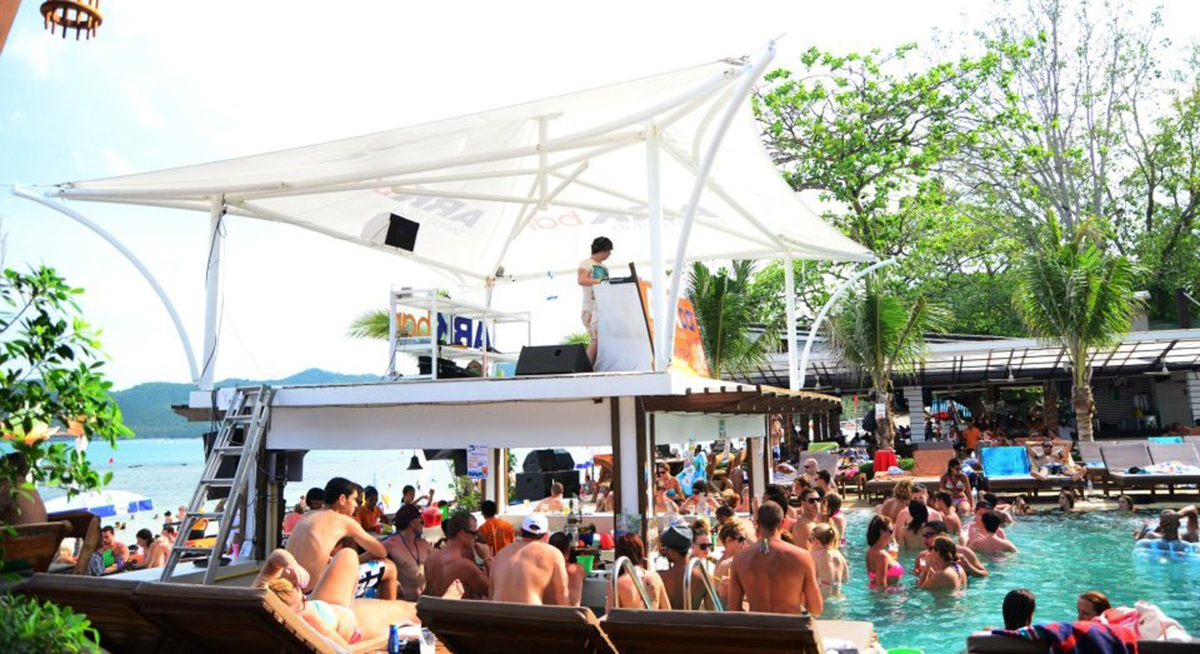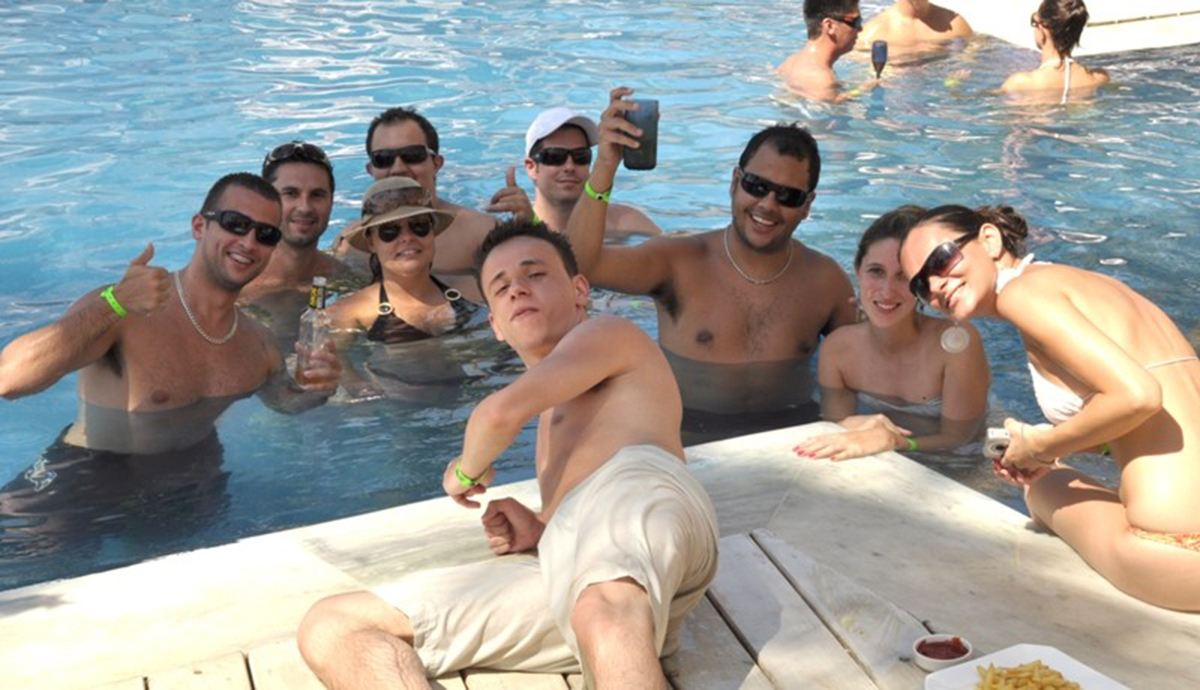The summer months bring family vacations, outings, and plentiful time spent on the beach. Many gatherings on the beach most certainly involve sun, alcohol, and a fun time. The prolonged exposure to the intense sunlight, however, increases the risk for the development of skin cancer, melanoma in particular, due to harmful UV radiation. The U.S. Centers of Disease Control and Prevention (CDC) report that cancer is the second leading cause of death, claiming over 576,000 individuals annually.

Melanoma develops primarily as a result of DNA damage in the cells called melanocytes. Melanocytes are the cells that are responsible for producing the darkened pigment in the skin, which gives the body a “tanned” appearance. While many individuals are aware of the potential dangers of the sun and are informed about the basics of sunblock protection, very few know about the additional dangers of combining the sunbathing and alcohol consumption. This is not particularly surprising, since the connection was only revealed by the latest research studies.
Several major long-term studies have convincingly demonstrated that alcohol and cancer are linked. Below are just a couple of examples of such studies that confirm this statement on large groups of people.
Alcohol and the risk of skin cancer: Women’s Health Study
The Women’s Health Study was a large study involving over 59,000 Caucasian post-menopausal women with the mean age of 63.6 years. This study, which followed-up the participants for 10 years after enrollment, reported that women who consumed at least seven drinks per week were 64 percent more at risk for the development of skin cancer. When the participants were categorized by their preferences for wine or liquor, the risk for skin cancer remained similar. The participants who preferred wine were at 52 percent higher risk for melanoma whereas the individuals who preferred liquors were at 65 percent higher risk, suggesting that regardless of the type of alcohol consumed the skin cancer risk is increased by frequent alcohol intake.
The U.S. Radiologic Technologists Study
The U.S. Radiologic Technologist study enrolled over 68,000 Caucasian individuals, most of whom were female and who began the study cancer-free. The study examined the influence of the lifestyle factors such as smoking and alcohol intake, as well as hormonal and anthropometric factors on the risk of cancer development. The study revealed a clear connection between consumption of alcohol and cancer risk.
See Also: Skin Cancer Melanoma: Symptoms and Treatment Options
In addition, there was a correlation between the amount of alcohol consumed and the risk of developing melanoma.
The link between skin cancer and alcohol is not particularly surprising. After all, the connection between alcohol and other types of cancer is well known. But the fact that this effect can be significantly enhanced by exposure to the UV light came as a bit of surprise.
Alcohol Enhances The Effects Of Sunburns
The recent research study has focused on how alcohol increases the risk for the development of melanoma, the strongest and most deadly of all the skin cancers. Sunburn, the UV light-mediated damage to the skin, is the most common and dangerous risk factor for melanoma. Sunburns can be caused not only by sunlight but also by the excessive use of tanning beds. In the summer months on the beach, burns are quite common. With the sun reflecting off water, sand, and concrete, sun burns can be obtained particularly easily. Researchers have done so-called meta-analysis, the study that combined together the results of 16 previous studies that examined the relationship between the alcohol consumption and the sun burn severity. With the participants of the meta-analysis categorized into “light drinking” and “moderate-to-heavy drinking”, the results showed that the consumption of alcohol was positively associated with the risk of developing melanoma.

The study demonstrates a need to further educate the public about the potential dangers of drinking while being exposed to the sun.
Sun protection is the key for melanoma prevention
Convincing research data suggesting the dangers of sun exposure combined with the consumption of alcohol once more emphasize the need for the skin protection against UV irradiation. Sunblock with a strong SPF rating is the first step in protecting the skin from the sun’s UV rays. Higher SPF ratings are more effective than lower ratings. Creams and lotions are more effective for the protection of the skin than the spray lotions. When swimming or getting wet, be sure to reapply according to the directions on the sunblock bottle – most sunblock are not “waterproof”. When partying outdoors in the summer or having a fun time at the beach, moderation in alcohol consumption can help avoid severe sunburns. Avoiding the over-consumption of alcohol can help keep the skin healthy and free from damaging cancer. Type of alcohol consumed does not have significant influence on the risk level – what really matters is the total quantity of alcohol consumed and the general level of consumption on the long-term basis.
Tanning beds, when used extensively, may also pose a risk for skin cancer and melanoma. These days, most tanning beds and tubes are equipped with the UV lamps that do not generate the most dangerous type of UV light with shorter wavelength. But the skin of some people is more sensitive to the UV rays, and the extensive exposure even to milder UV irradiation might be dangerous for them.
Both popular media and scientific literature strongly emphasize the dangers of UV irradiation from the sun. But exposure to the sun is not (and should not be treated as) only the source of potential health risks.
See Also: Natural sunburn protection
Avoidance of the sun may have negative consequences via depriving body from the positive effects associated with sunbathing. Like with many other things in life, moderation is the key to avoiding problems.
- Freedman, DM, Sigurdson, A, Doody, MM, Rao, RS, Linet, MS (2003) Risk of melanoma in relation to smoking, alcohol intake, and other factors in a large occupational cohort. Cancer Causes Control, vol 14, issue 9, pp. 847-857
- Kubo, JT, Henderson, MT, Desai, M, Wactawski-Wende, J, Stefanick, ML, Tang, JY (2014) “Alcohol consumption and risk of melanoma and non-melanoma skin cancer in the Women’s Health Initiative”, Cancer Causes & Control, vol. 25, issue 1, pp. 1-10
- Murphy, SL, Xu, J, Kochanek, KD (2012) Deaths: Preliminary Data for 2012, National Vital Statistics Reports, vol. 60, no. 4, pp. 1-51
- Rota, M, Pasquali, E, Bellocco, R, Bagnardi, V, Scotti, L, Islami, F, Negri, E, Boffetta, P, Pelucchi, C, Corrao, G, La Vecchia, C (2014) Alcohol drinking and cutaneous melanoma risk: a systematic review and dose-risk meta-analysis, British Journal of Dermatology, vol. 170, issue 5, pp. 1021-1028.
- Photo courtesy of Ross by Flickr : www.flickr.com/photos/89441501@N08/8136497079
- Photo courtesy of Sea Club Ilhabela by Flickr : www.flickr.com/photos/44282322@N07/4406706840


Your thoughts on this